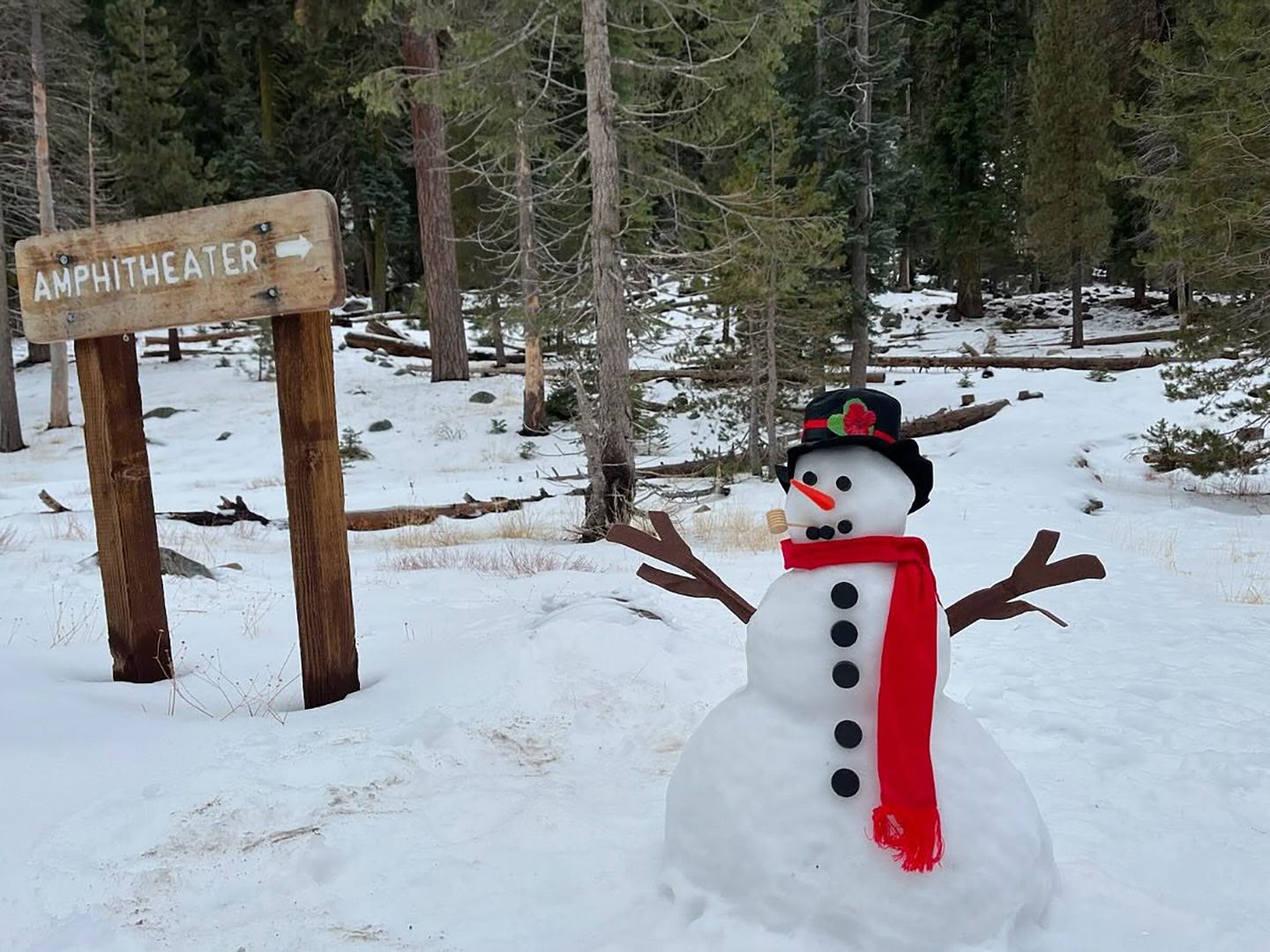Volume 3, Number 38 - Thursday, Dec. 26, 2024
Published every Monday and Thursday
Perspective
HOPES FOR A WHITE CHRISTMAS were dashed in most of California as recent storms delivered rain to all but the most northerly and highest elevations of the Sierra Nevada.
I checked the weather websites for Yosemite and Sequoia and Kings Canyon National Parks this morning (Yosemite HERE and SEKI HERE). The snow level for Yosemite tonight is 6,900 feet, with a potential accumulation of an inch of snow. In the Mineral King area of SEKI tonight, the snow level is 7,400 feet, with up to 14 inches of snow.
Sierra weather watchers know that the snowpack varies widely depending on the elevation and other factors. A Dec. 25 article by Jack Lee, weather science data reporter for the San Francisco Chronicle, explains why the mountains of Northern California — specifically areas near Lassen Peak — get lots more snow than other areas, including the Southern Sierra where most giant sequoias grow.
You can read the article HERE (gift link), and it references a really cool online tool called the National Gridded Snowfall Analysis (HERE). Using this tool, you can see snowfall accumulation across the country by season or accumulation periods as short as the last six hours (or longer).
I suspect that most people in California understand that the Sierra snowpack impacts our daily lives, at least readers of this newsletter must. As an example, recent storms in Northern California prompted the state Department of Water Resources on Dec. 23 to increase its allocation of water from the State Water Project from the 5% announced earlier in the month to 15% (info HERE). This is still far less water than the public water agencies that serve 27 million Californians need, but it shows how much people in Southern California depend on the Northern California snowpack.
Communities — and farmers — in the San Joaquin Valley highly rely on the snowpack from the Central and Southern Sierra because the runoff feeds reservoirs that supply the valley with water. Not just farms, but also the forests where giant sequoias grow depend on snowpack.
Despite the news-making storm that recently battered the California coast, taking out part of the wharf at Santa Cruz, much of the Sierra Nevada and areas of Central California are still abnormally dry (drought map HERE).
Fortunately, we’re coming off of two really wet years, and the three-month forecasts of the Climate Prediction Center (HERE), show a pretty good chance of normal precipitation through March.
You can read more about why snow matters to giant sequoias HERE.
Winter break
As previously announced, I’m taking a break from the newsletter until Monday, Jan. 6, 2025. Happy New Year!
Did you know you can comment here?
It’s easy to comment on items in this newsletter. Just scroll down, and you’ll find a comment box. You’re invited to join the conversation!
Thanks for reading!




